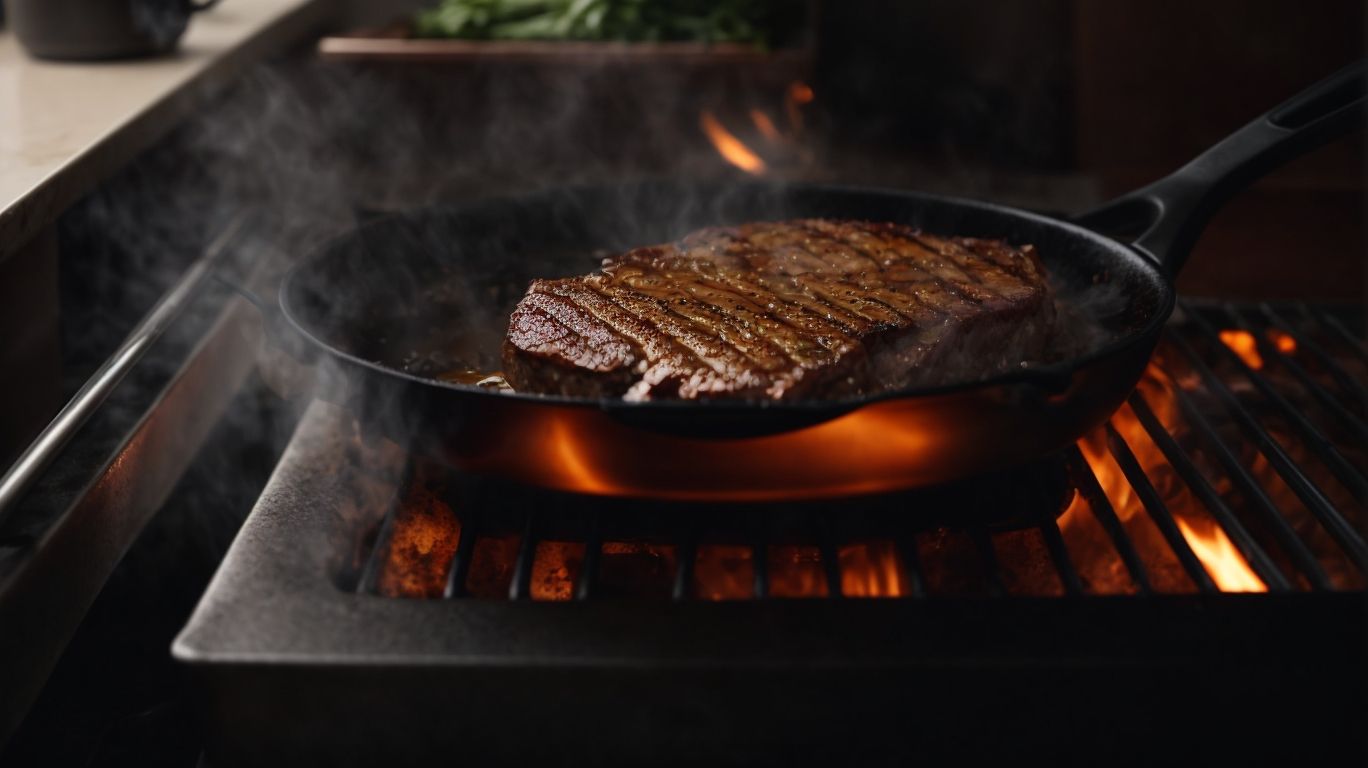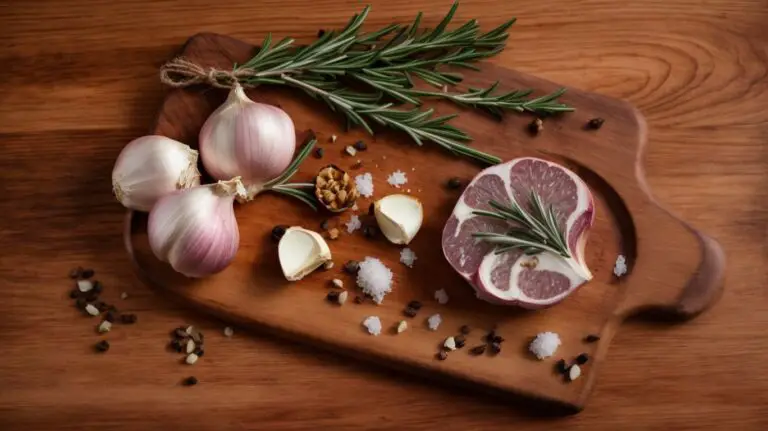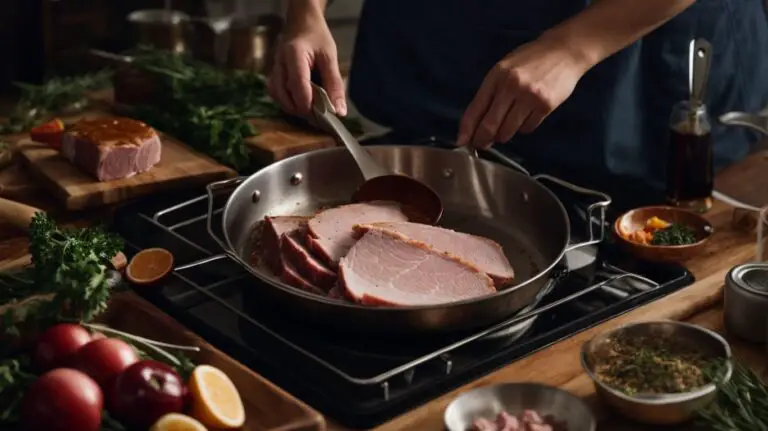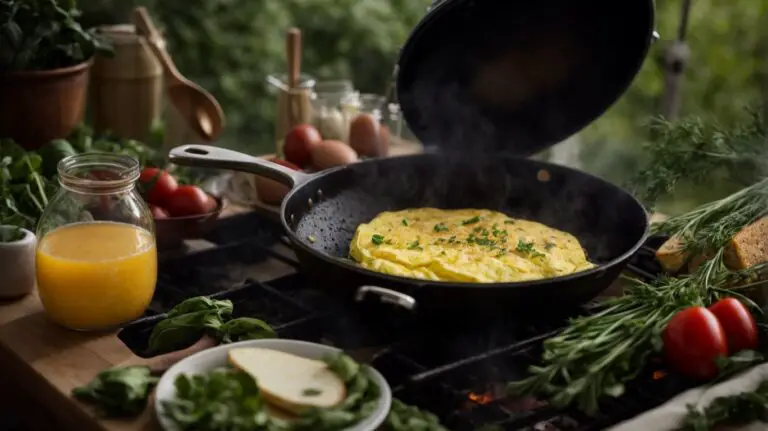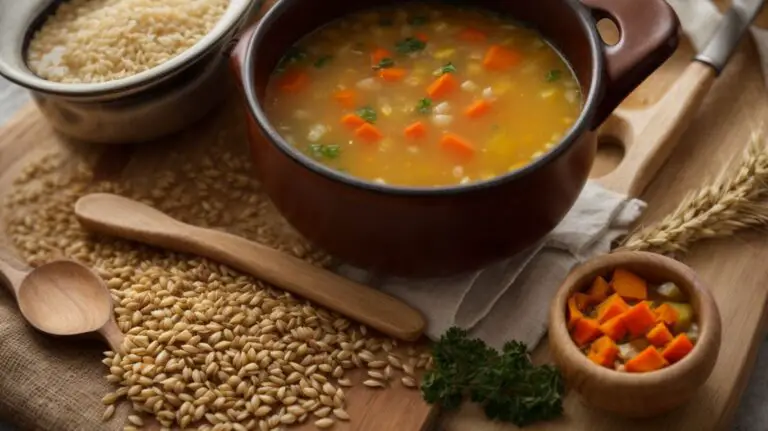How to Cook Veal Steak on Pan?
Are you looking to impress your dinner guests with a gourmet meal? Look no further than the exquisite veal steak.
In this article, we will explore everything you need to know about cooking the perfect veal steak on a pan.
From understanding the difference between veal and beef steak to choosing the right pan and preparing the meat for cooking, we’ve got you covered.
So grab your apron and let’s get cooking!
Key Takeaways:
About Veal Steak
Veal steak is a delightful dish that combines the tenderness of veal chops with the aromatic flavors of rosemary, lemon, and a touch of olive oil. Maggie Beer, renowned for her culinary expertise, has shared a delicious recipe for pan-fried veal steak that showcases the perfect balance of flavors.
When cooking veal steak, pan-frying is a popular method that helps seal in the juices and create a beautiful crust on the outside. The key ingredients of rosemary, lemon, olive oil, and black pepper complement the delicate flavor of the veal, enhancing its natural goodness. Maggie Beer’s recipe takes this dish to the next level by incorporating butter, adding a richness that elevates the overall taste. The result is a tender and flavorful veal steak that is sure to impress even the most discerning palate.
What Is Veal?
Veal is a type of meat known for its exceptional tenderness and lean profile, making it a popular choice for gourmet dishes. The Food & Wine Test Kitchen has explored various cuts of veal, including loin chops and rib chops, to showcase the versatility and flavor of this premium meat.
One of the key characteristics of veal is its delicate texture, which results from the meat’s young age at slaughter. This tenderness allows for quick cooking methods like pan-searing or grilling, perfect for retaining moisture and flavor. Veal is prized for its unique mild flavor, providing a blank canvas for a variety of seasoning and sauce pairings.
Loin chops, also known as veal “T-bones,” are a prime cut that combines the tenderloin and top loin, offering a perfect balance of tenderness and flavor. On the other hand, rib chops, with their slightly fattier content, are ideal for slow cooking methods like braising or roasting, yielding succulent and rich-tasting meat.
What Makes Veal Steak Different from Beef Steak?
Veal steak offers a distinct flavor profile compared to beef steak, with a milder taste that pairs beautifully with various cooking methods. The bone-in veal chop and strip loin cuts are prime examples of how veal steak stands out for its delicate flavor and versatility in the kitchen.
One of the primary differences between veal steak and beef steak lies in their flavor profiles. Veal steak, known for its tenderness and subtle taste, tends to be more delicate than its beef counterpart, which often boasts a richer, more robust flavor. Regarding cooking methods, veal steak excels in recipes that highlight its delicate nature, such as quick pan-searing or gentle braising, whereas beef steak, with its stronger flavor, is often grilled to bring out its bold taste.
Choosing the Right Pan for Cooking Veal Steak
Selecting the ideal pan for cooking veal steak is crucial to achieving the perfect sear and flavor. A cast iron pan is often recommended for its excellent heat retention, which is essential for creating a flavorful pan sauce to accompany your pan-fried veal chops. Follow the directions in your recipe for optimal results.
Regarding cooking veal steak, the type of pan you use can make a significant difference in the outcome of your dish. Cast iron pans are favored by chefs for their ability to distribute heat evenly, ensuring that your veal steak cooks to perfection without any hot spots. The even heating of a cast iron pan allows the meat to sear beautifully, locking in juices and creating that coveted crust on the outside.
What Type of Pan Should You Use?
When cooking veal steak, it is recommended to use a pan that can withstand high heat levels and promote even cooking. A T-bone steak is a versatile option that allows for precise temperature control, ensuring your veal reaches the desired internal temperature. Using a meat thermometer and following expert cooking tips can elevate your culinary skills.
For veal steak, a cast iron skillet is often an excellent choice due to its high heat retention properties and ability to distribute heat evenly across the surface. This ensures that your steak cooks uniformly without hot spots. The versatility of a T-bone steak provides a balance between the tenderloin and the strip loin, offering a range of flavors and textures in one cut.
When preparing your veal steak, it’s crucial to monitor the internal temperature for the perfect doneness. A meat thermometer can help you achieve this by accurately gauging when the steak reaches rare, medium-rare, medium, or well-done. Remember that veal should be cooked to an internal temperature of 145°F (63°C) for optimal taste and texture.
To enhance the flavor profile of your veal steak, consider marinating it beforehand to tenderize the meat and infuse it with additional flavors. A marinade containing herbs, garlic, olive oil, and citrus juices can add depth to your dish. Searing the steak briefly on high heat and then finishing it in the oven can also result in a beautifully caramelized crust and juicy interior.
What Material Should the Pan Be Made of?
The choice of material for your pan when cooking veal steak can impact the overall flavor and texture of the dish. A cast iron pan is ideal for achieving a perfect sear and locking in juices. Season your veal with salt, pepper, and other desired seasonings before transferring it to the oven for a flawless finish.
Regarding cooking veal steak, using the right pan material plays a crucial role in bringing out the best in the dish. Cast iron pans are renowned for their ability to distribute heat evenly, resulting in that coveted caramelization on the outside while keeping the meat tender and juicy on the inside. The superior heat retention of cast iron ensures that the flavor of the veal is intensified without losing any essential moisture.
The process of seasoning your veal steak before oven cooking is vital to infuse it with depth and complexity of flavor. Generously applying a blend of salt, pepper, and complementary spices not only enhances the taste of the meat but also creates a delectable outer crust when seared.
How Big Should the Pan Be?
The size of the pan you choose for cooking veal steak should accommodate the cut comfortably to ensure even cooking and proper doneness. Consider using avocado oil for its high smoke point, contributing to a beautifully seared exterior. Explore veal recipes in an e-book for creative inspiration and culinary guidance.
When selecting a pan, opt for one that allows ample space for the veal steak, preventing overcrowding that can lead to uneven cooking. This attention to detail ensures that each piece gets the perfect amount of heat exposure.
Avocado oil’s high smoke point makes it an ideal choice for achieving that coveted golden crust on your veal steak while locking in juices, resulting in a moist and flavorful dish.
Delve into the e-book’s vast collection of veal recipes to captivate your taste buds with a plethora of cooking styles—from traditional to innovative, inviting you on a culinary journey filled with delightful flavors and textures.
Preparing the Veal Steak for Cooking

Credits: Poormet.Com – Gerald Walker
Preparation is key when getting veal steak ready for cooking, and adding flavorful ingredients like garlic, white wine, and chicken stock can enhance the overall taste profile. Incorporate feedback from reviews and consider making tweaks based on personal preferences to customize your veal steak recipe to perfection.
Begin by selecting high-quality veal steaks, ensuring they are well-marbled for tenderness. Next, season the steaks generously with salt and pepper, allowing them to sit at room temperature for about 30 minutes to absorb the flavors.
- In a hot skillet, sear the veal steaks on both sides until they develop a golden crust.
- At this stage, add minced garlic to infuse rich flavor into the meat.
- Deglaze the pan with white wine to create a delicious pan sauce, then pour in chicken stock to further intensify the taste.
- Allow the steaks to simmer gently in the sauce until they reach your desired level of doneness.
Remember, reviews are valuable resources for improving your cooking skills and perfecting your recipes. Use them as a guide to adjust seasoning, cooking times, or additional ingredients to suit your own taste preferences.
How to Thaw Frozen Veal Steak?
Thawing frozen veal steak properly is essential to maintain its quality and flavor. Consider pairing it with a delectable wine sauce infused with mushrooms for a gourmet touch. Miss Annie’s culinary expertise can guide you through the process of thawing veal steak, offering insights similar to preparing pork chops.
Regarding thawing frozen veal steak, the key is to do it slowly in the refrigerator. Place the packaged steak on a plate to catch any drips as it thaws. This gradual process helps retain the meat’s natural juices and tenderness. Miss Annie often recommends seasoning the veal steak with salt and pepper before cooking to enhance its flavors, much like how you would season pork chops.
For a delightful wine sauce to accompany your veal, sauté sliced mushrooms in butter until golden brown. Add a splash of red wine and simmer until the sauce thickens slightly. This sauce complements the delicate taste of veal perfectly, elevating the dish to a restaurant-quality meal.
Should You Marinate the Veal Steak?
Marinating veal steak can infuse it with additional flavors and tenderness, enhancing its overall appeal. Consider using a marinade with red wine, brandy, and garlic to elevate the taste profile. Pair your veal steak with comforting sides like garlic mashed potatoes and steamed veggies for a well-rounded meal experience.
When you marinate veal steak, you allow the meat to absorb the complex flavors of the marinade, creating a succulent and flavorful dish. The acidity of wine helps tenderize the meat while adding a rich depth of flavor, complemented by the warm notes of brandy and the aromatic essence of garlic. Marinating helps to lock in moisture, ensuring a juicy and tender result when cooking.
Cooking the Veal Steak on Pan
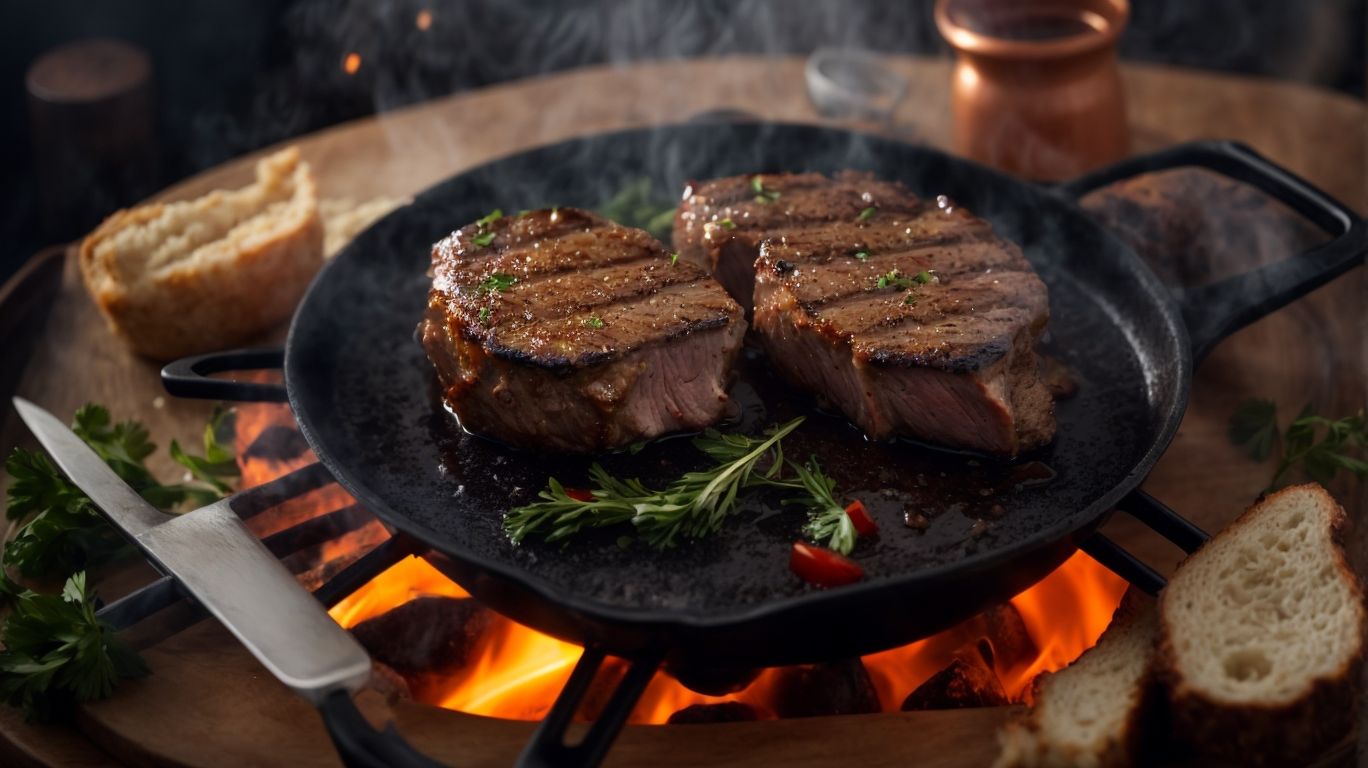
Credits: Poormet.Com – Alan Torres
Cooking veal steak on a pan requires a balance of informative guidance, descriptive techniques, and attention to detail to ensure a mouthwatering result. Explore a variety of veal recipes in an e-book for detailed instructions and creative inspiration to elevate your culinary skills.
When preparing veal steak, choosing the right cut of meat is crucial to achieving optimal tenderness and flavor. Seasoning plays a key role in enhancing the natural taste of veal; consider using a blend of herbs and spices to complement the meat’s delicate texture.
Properly preheating your pan and ensuring it’s sufficiently hot before adding the veal steak is essential for creating a flavorful sear on the outside while keeping the meat tender and juicy inside.
Be mindful of the cooking time and temperature to avoid overcooking, which can result in tough and dry meat. Refer to the e-book for specific cooking guidelines based on the thickness of your veal steak, ensuring a perfect dish every time.
Step-by-Step Guide to Cooking Veal Steak
A step-by-step guide to cooking veal steak involves selecting quality cuts like those from the VanDrie Group in Australia and incorporating a flavorful Shiraz blend recommended by expert Nicky Ryan. Follow this detailed process to achieve a delectable outcome that showcases the excellence of veal.
Begin by choosing a premium cut of veal steak from a trusted supplier like the VanDrie Group, known for their high-quality products and commitment to sustainability. Ensure the meat is fresh, preferably organic and ethically sourced.
Next, prepare a marinade using the Shiraz blend suggested by Nicky Ryan. This rich, bold wine will add depth of flavor to the veal, enhancing its natural taste. Allow the steak to marinate for at least 30 minutes to absorb the delicious wine-infused flavors.
When ready to cook, heat a skillet or grill to medium-high heat. Make sure the cooking surface is well-oiled to prevent the veal from sticking.
How to Know When the Veal Steak is Cooked to Perfection?
Determining when veal steak is cooked to perfection requires attention to detail and knowledge of the desired internal temperature. Utilize cooking tips specific to veal steak and monitor the doneness level using a reliable meat thermometer. The use of a cast iron pan can aid in achieving the ideal sear and texture.
When cooking veal steak, it’s crucial to understand that the desired internal temperature varies based on personal preferences. For a medium-rare finish, aim for an internal temperature of around 145°F (63°C), while medium calls for 160°F (71°C).
To ensure accurate results, experts recommend inserting the meat thermometer into the thickest part of the steak without touching bone or fat. This method guarantees precise readings, helping you achieve consistent results every time.
By using a cast iron pan, you can create a beautifully seared crust on the outside of the veal steak, enhancing its flavor profile and locking in the juices. The even heat distribution of the pan contributes to a satisfying texture that complements the tender meat.
Serving and Enjoying Your Veal Steak
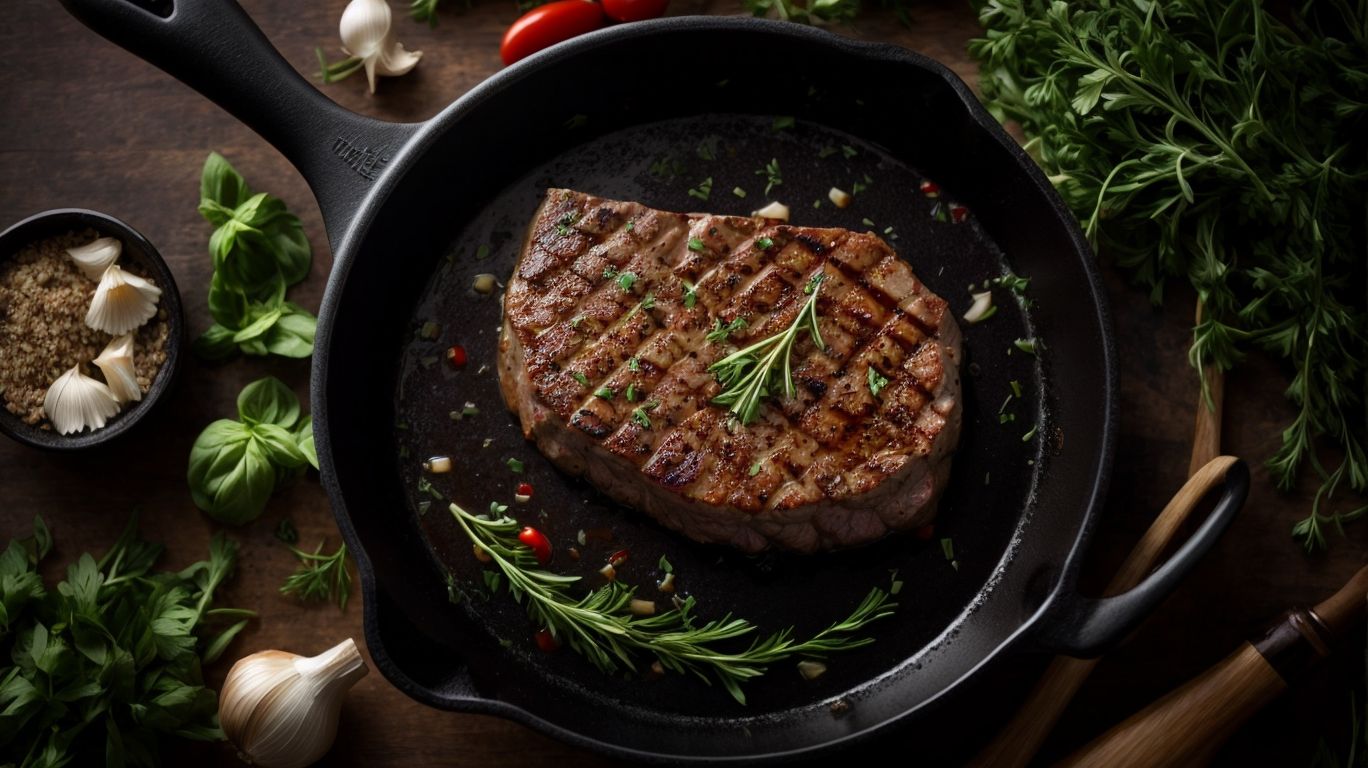
Credits: Poormet.Com – Kevin Jackson
Serving and enjoying your veal steak is a delightful experience that involves pairing it with complementary side dishes, following expert directions, and savoring the rich flavors of a well-prepared recipe. Explore suggested pairings, quality ingredients, and detailed directions to enhance your dining pleasure.
Regarding selecting side dishes to accompany your succulent veal steak, options like creamy mashed potatoes, roasted vegetables, or a fresh garden salad can provide a balance to the richness of the meat.
By focusing on the quality of the ingredients, such as choosing grass-fed veal and fresh herbs and spices, you can truly elevate the flavors of your dish, creating a culinary masterpiece.
Pairing your veal steak with a robust red wine, like a Cabernet Sauvignon or a bold Malbec, can enhance the dining experience by complementing the meat’s flavor profile.
How to Plate the Veal Steak?
Plating veal steak involves artfully arranging the tenderloin cut to showcase its exquisite flavor and the unique cooking methods used. Consider the differences in taste and texture between veal and beef to curate a visually appealing presentation that highlights the best features of your dish.
When plating a veal steak, attention to detail is paramount to elevate the dining experience. The delicate nature of veal calls for precise cooking techniques to ensure a tender yet flavorful outcome. Its mild, almost sweet taste differs from the robust flavor of beef, offering a more subtle palette for culinary experimentation.
Visually, veal tends to have a softer texture with a subtle pink hue, creating a visually striking contrast when paired with vibrant accompaniments like roasted vegetables or a rich sauce. Beef, on the other hand, boasts a more pronounced flavor profile and firmer texture, offering a hearty base for heartier pairings like mashed potatoes or robust red wine reductions.
What Side Dishes Go Well with Veal Steak?
Pairing suitable side dishes with veal steak enhances the overall dining experience, providing a harmonious balance of flavors and textures. Explore recommendations from the Food & Wine Test Kitchen for informative, descriptive, and detailed insights on the ideal accompaniments to complement your veal steak.
Regarding selecting the perfect side dishes to go alongside your succulent veal steak, it’s essential to consider how the flavors and textures will interplay. A crisp green salad tossed with a tangy vinaigrette can offer a refreshing contrast to the richness of the meat, while roasted vegetables drizzled with balsamic reduction add a sweet and savory depth. Creamy mashed potatoes or buttery risotto can provide a comforting backdrop to the tender veal, enhancing every mouthful with a luscious creaminess.
What Wine Pairings Complement Veal Steak?
Choosing the right wine pairings to complement veal steak involves considering the flavors of the dish, the richness of the wine sauce, and the preferred doneness level.
An essential aspect of pairing wine with veal steak is to match the flavors present in the dish with those in the wine. For a classic veal dish with a creamy mushroom sauce, a medium-bodied Pinot Noir can beautifully enhance the earthy undertones.
Alternatively, if you’re preparing a spicier veal dish with a peppercorn sauce, a bold and peppery Syrah can offer a delightful contrast. The intensity of the wine should complement the richness of the sauce without overpowering the delicate flavors of the veal.
Frequently Asked Questions
What is the best way to cook veal steak on a pan?
The best way to cook veal steak on a pan is by using high heat and a good amount of oil, and making sure to not overcook it.
How long should I cook veal steak on a pan?
It depends on the thickness of the steak, but on average it takes about 3-4 minutes per side for medium-rare, and 5-6 minutes for medium.
What type of pan should I use for cooking veal steak?
A heavy-bottomed pan, such as a cast iron or stainless steel pan, is best for cooking veal steak as it distributes heat evenly and allows for a nice sear on the meat.
Do I need to marinate veal steak before cooking it on a pan?
No, you do not need to marinate veal steak before cooking it on a pan. However, you can choose to marinate it for extra flavor if desired.
Can I use butter instead of oil for cooking veal steak on a pan?
Yes, you can use butter instead of oil for cooking veal steak on a pan. Just make sure to use a high smoke point butter, such as clarified butter, to prevent it from burning.
What are some tips for achieving a perfect sear on veal steak when cooking on a pan?
To achieve a perfect sear on veal steak, make sure the pan is hot before adding the steak, pat the steak dry before seasoning and cooking, and resist the urge to move the steak around too much while cooking.

